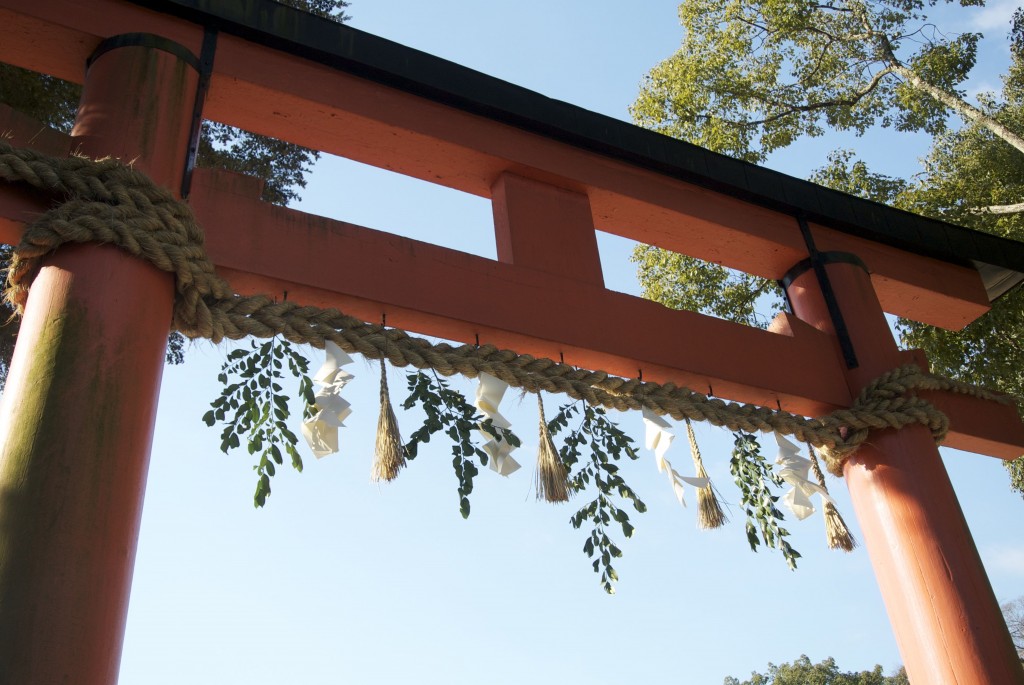
My first shrine visit of the year was to Kamigamo Shrine in north Kyoto, a World Heritage Shrine and set amidst pleasant open grassland and woods. It dates back before Kyoto was founded in 794, but such is its antiquity no one is quite certain when and how it was founded. According to Joseph Cali in Shinto Shrines (Uni. of Hawaii Press), the first documented date of the shrine’s founding is 678.
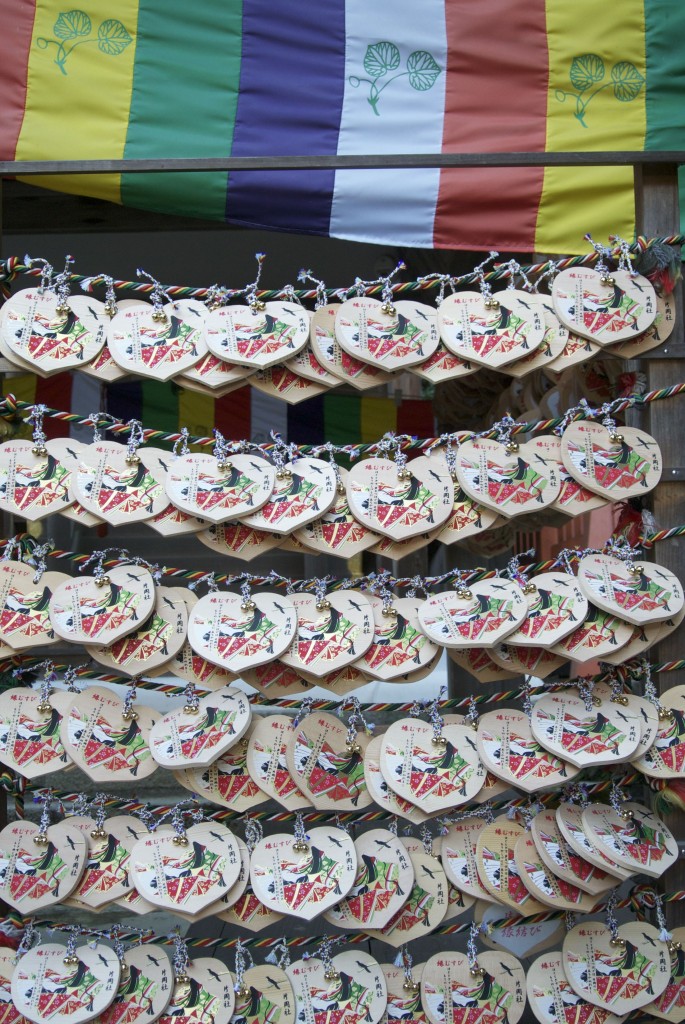
Heart ema with the Kamigamo aoi leaf emblem on the cloth above
I was early enough to beat the crowds and as it was a glorious sunny morning (an auspicious start to the year!), I wandered around for a while taking photos. Though I’ve been to the shrine many times, I don’t recall having seen before a prominent enmusubi (love connection) shrine with its heart ema, shown in the picture above. I’ve got the feeling that every shrine in the land is jumping on this popular bandwagon….
The shrine had decked itself out for the New Year, with a pair of white snakes displayed behind the two famous cones of sand that stand in its main compound (yin-yang emblems, or signifiers of change and renewal). There was also a fine carving to greet visitors for the year of the snake.
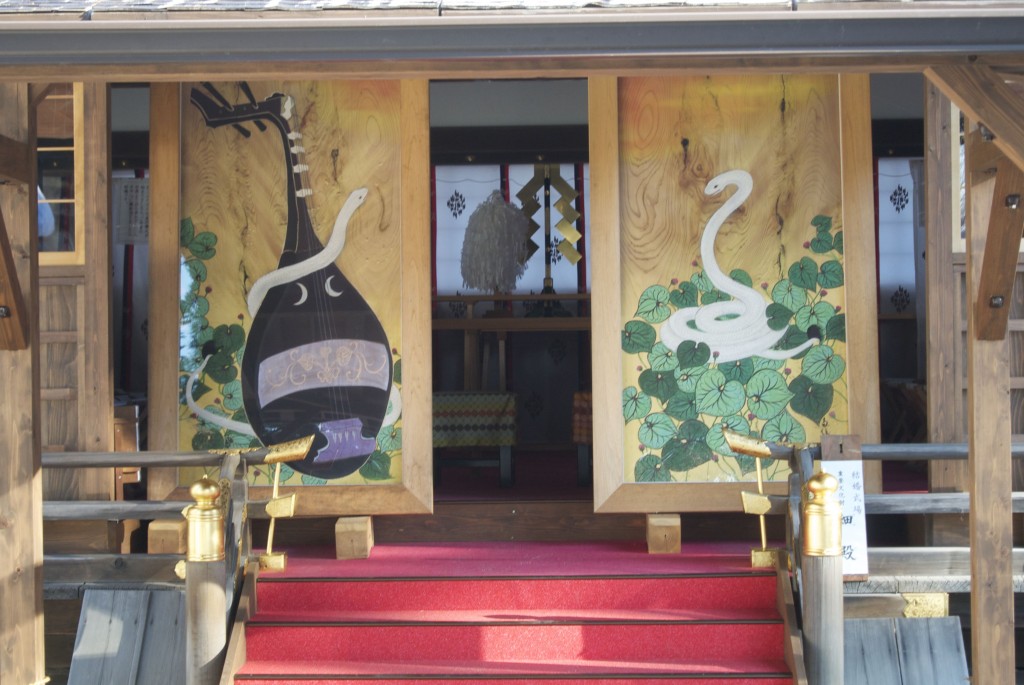
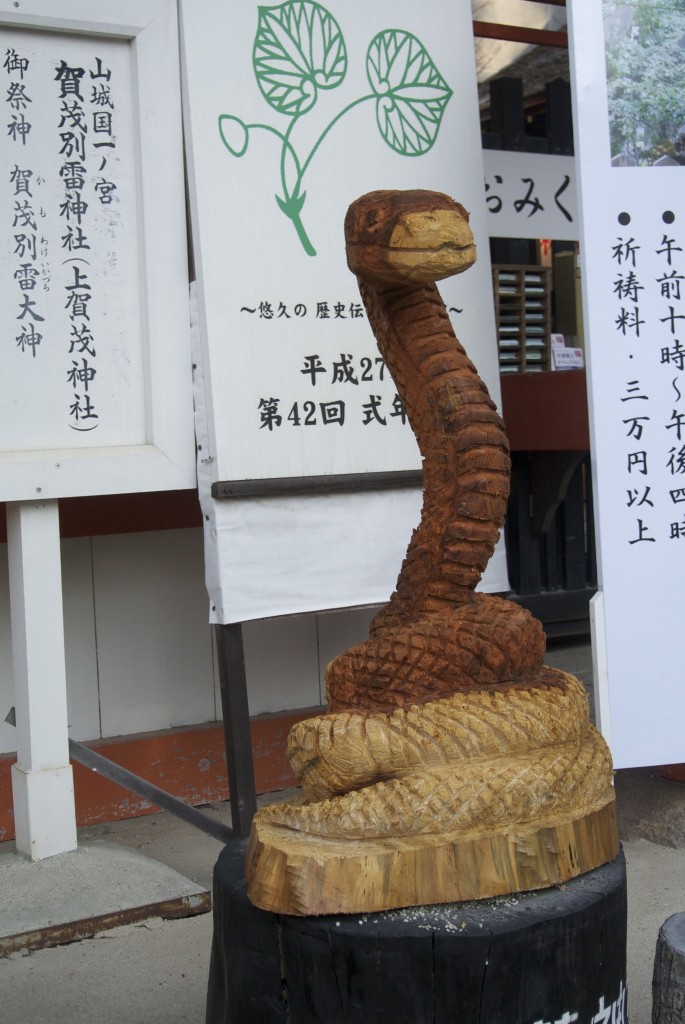
The shrine’s white horse was on display too. I think there are only about a dozen shrines in all that keep the custom of hosting a white horse, once apparently a common offering to the kami. People were lining up to pay 100 yen to feed it carrots, which were eagerly munched down. As an animal lover, I can’t say I’m fond of seeing a wild animal tied up all day for the pleasure of sightseers but it seemed happy enough (not sure if it will get stomach cramps afterwards though. Another case of New Year overeating!).
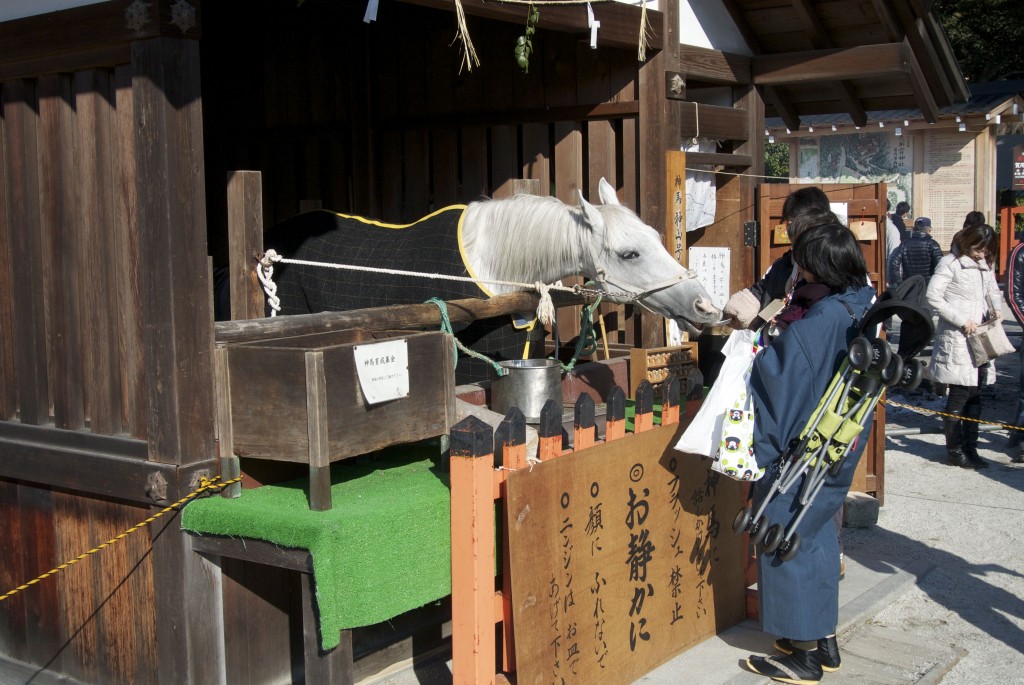
Unfortunately the main shrine was under repair, but inside there was a blind which allowed partial sight of the interior in alluring manner. I imagine it was a similar kind of screen that was used in Heian times to obscure the view. A screen that doesn’t screen is a very Japanese trait, like the torii gate that is not a gate, or the barrier to entry into a garden that is not actually a barrier.
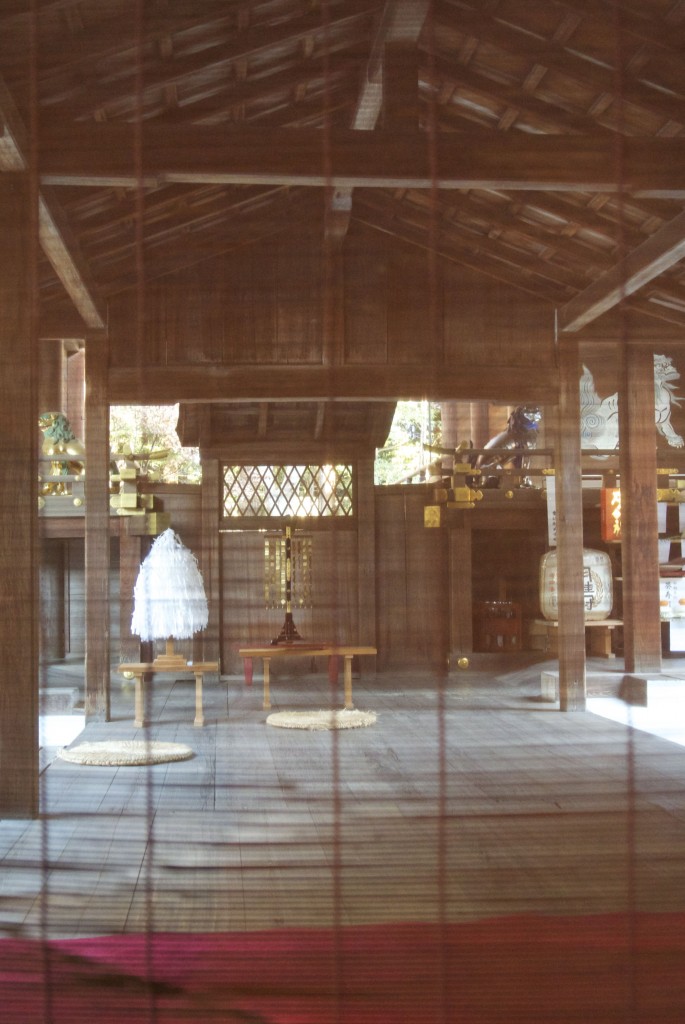
I walked back through the wooded area of the precincts and came across a place that looked as if it were desinged for doing ablutions (washing hands) in the river. Before water-basins were introduced at shrines, washing in rivers was probably the norm, and Kamigamo’s sister shrine, Shimogamo Jinja, has a similar feature. The most well-known example however is the one at Ise. Unlike that at Ise, it doesn’t look as if anyone at Kamigamo actually uses the river though.
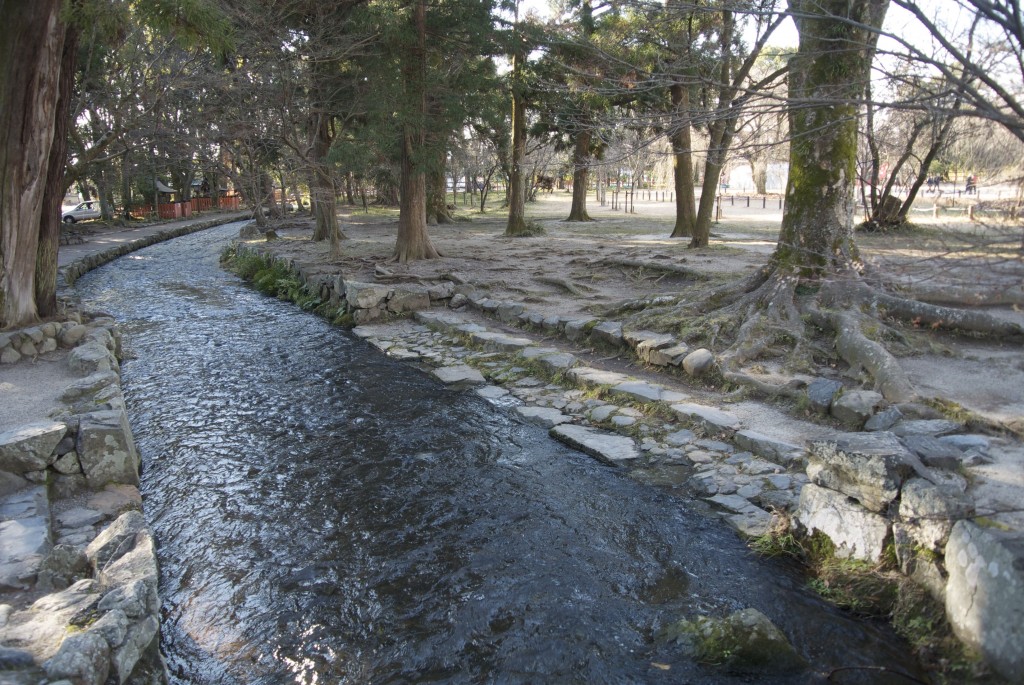

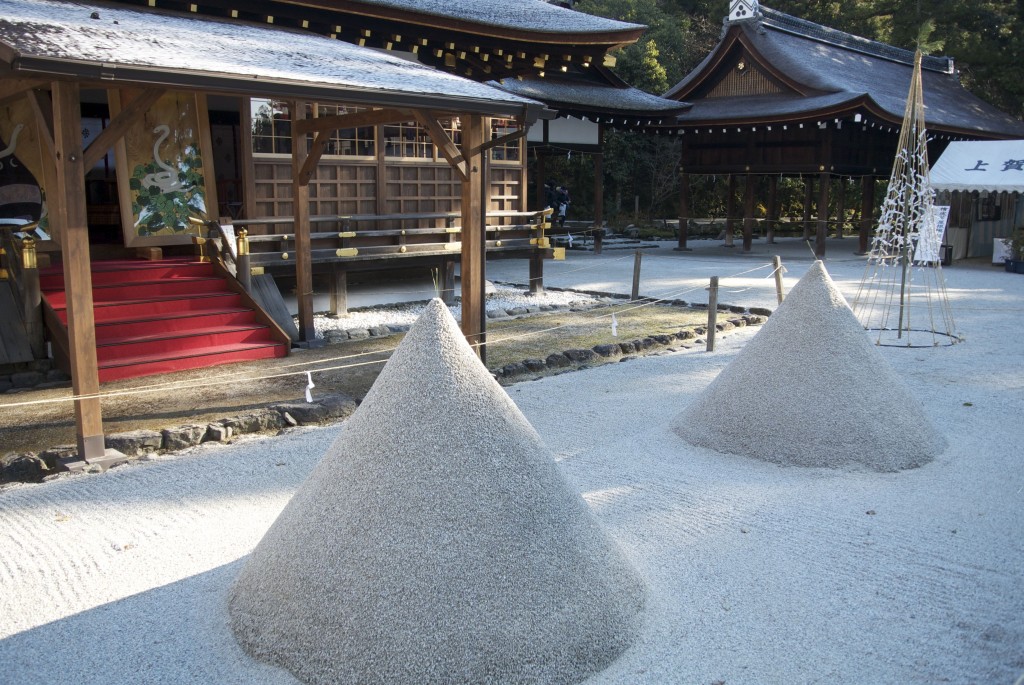
Leave a Reply